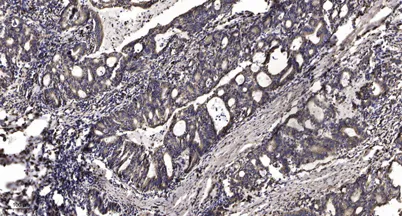Met (Phospho Tyr1235) rabbit pAb
CAT:
855-ES20169-02
Size:
100 μL
Price:
Ask
- Availability: 24/48H Stock Items & 2 to 6 Weeks non Stock Items.
- Dry Ice Shipment: No




Met (Phospho Tyr1235) rabbit pAb
- Description: Catalytic activity: ATP + a [protein]-L-tyrosine = ADP + a [protein]-L-tyrosine phosphate. Disease: Activation of MET after rearrangement with the TPR gene produces an oncogenic protein. Disease: Defects in MET are a cause of hepatocellular carcinoma (HCC) [MIM: 114550]. Disease: Defects in MET are a cause of hereditary papillary renal carcinoma (HPRC) [MIM: 605074]; also known as papillary renal cell carcinoma 2 (RCCP2). HPRC is a form of inherited kidney cancer characterized by a predisposition to develop multiple, bilateral papillary renal tumors. The pattern of inheritance is consistent with autosomal dominant transmission with reduced penetrance. Disease: Defects in MET may be associated with gastric cancer. Disease: Genetic variations in MET may be associated with susceptibility to autism type 9 (AUTS9) [MIM: 611015]. Autism is a neurodevelopmental disorder characterized by disturbance in language, perception and socialization. The disorder is classically defined by a triad of limited or absent verbal communication, a lack of reciprocal social interaction or responsiveness, and restricted, stereotypical, and ritualized patterns of interests and behavior. Domain: The kinase domain is involved in SPSB1 binding. function: Receptor for hepatocyte growth factor and scatter factor. Has a tyrosine-protein kinase activity. Functions in cell proliferation, scattering, morphogenesis and survival. online information: C-MET entry, similarity: Belongs to the protein kinase superfamily. Tyr protein kinase family. similarity: Contains 1 protein kinase domain. similarity: Contains 1 Sema domain. similarity: Contains 3 IPT/TIG domains. subunit: Heterodimer formed of an alpha chain (50 kDa) and a beta chain (145 kDa) which are disulfide linked. Binds PLXNB1 and GRB2. Interacts with SPSB1, SPSB2 and SPSB4 (By similarity). Interacts with INPP5D/SHIP1. When phosphorylated at Tyr-1356, interacts with INPPL1/SHIP2. Interacts with RANBP9 and RANBP10, as well as SPSB1, SPSB2, SPSB3 and SPSB4. SPSB1 binding occurs in the presence and in the absence of HGF, however HGF treatment has a positive effect on this interaction. Interacts with MUC20; prevents interaction with GRB2 and suppresses hepatocyte growth factor-induced cell proliferation.
- Synonyms: Hepatocyte growth factor receptor (HGF receptor;EC 2.7.10.1;HGF/SF receptor;Proto-oncogene c-Met;Scatter factor receptor;SF receptor;Tyrosine-protein kinase Met)
- Gene ID: 4233
- UniProt: P08581
- Cellular Locus: Membrane; Single-pass type I membrane protein.; [Isoform 3]: Secreted.
- Host: Rabbit
- Species Reactivity: Human, Mouse, Rat
- Immunogen: Synthesized peptide derived from human Met (Phospho Tyr1235)
- Clonality: Polyclonal
- Validated Applications: WB, ELISA, IHC
- Stability: 1 year
- Concentration: 1 mg/mL
- Dilution: WB 1:500-2000;IHC-p 1:50-300; ELISA 2000-20000
- Molecular Weight: 140170kD
- Storage Conditions: PBS with 0.02% sodium azide and 50% glycerol pH 7.4. Store at -20°C. Avoid repeated freeze-thaw cycles.
